A Scent of Truffle Heaven
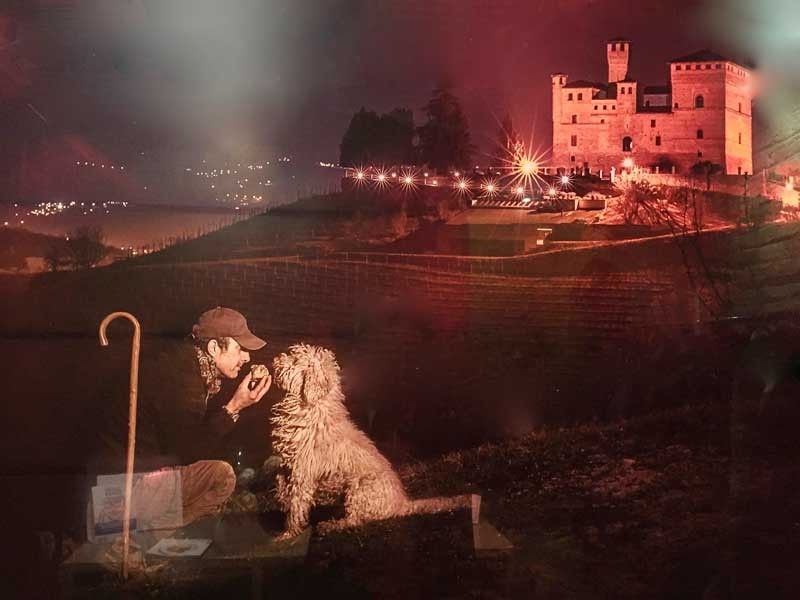
In the foyer of Marc Lanteri’s Michelin-star Ristorante al Castello, up in the hills of Asti, Italy, there hangs what looks like a classical oil painting: a red castle in the distance, a man and his dog kneeling in the foreground. On closer inspection, it’s a photo of the chef, Marc Lanteri, holding a truffle up to the nose of his canine, a Lagotto Romagnolo (local hunting dog) skilled in sniffing out the prized fungus. (It’s debatable whether truffles are technically “mushrooms”; they are, in fact, fungi descended from aboveground mushrooms.)
This is truffle-hunting territory, and passing though the hills on a bus earlier that day, Annika, a seasoned Norwegian blogger, points to a man leading a dog through open fields: “Looking for truffles,” she says. Hunting season ended a month before, but you still see, driving through the Asti countryside, men leading dogs across the terrain, likely looking for leftover truffles hiding near the roots of poplar, linden and oak trees.
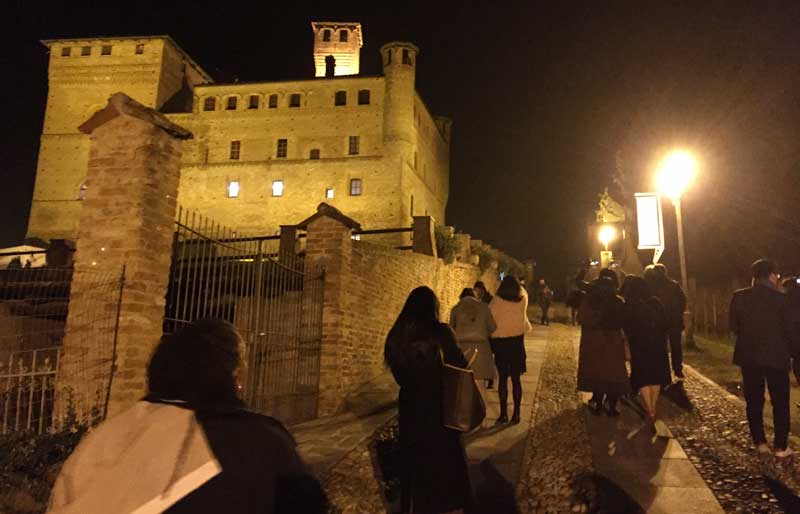
We approach Grinzane Cavour Castle, also a UNESCO Heritage Site, for our last gala meal with our Italian hosts.
Our guide Martina says she organizes truffle hunts in nearby Canneli, and it’s become not only competitive, but dangerous as well — for the dogs. Competing truffle hunters are known to poison each other’s canines — all for the love of white wild fungus. Martina says there are stricter guidelines for hunters now — licenses and such — after several such incidents.
People think of pigs as the best truffle hunters. But Italians use dogs instead. Why? Italy began banning the use of hogs in 1985 because the porkers tend to eat the truffles before hunters can get at them; their rough trotters can also damage the mycelium in the soil, preventing further truffle growth (dogs are better trained, though it takes up to four years to train them).
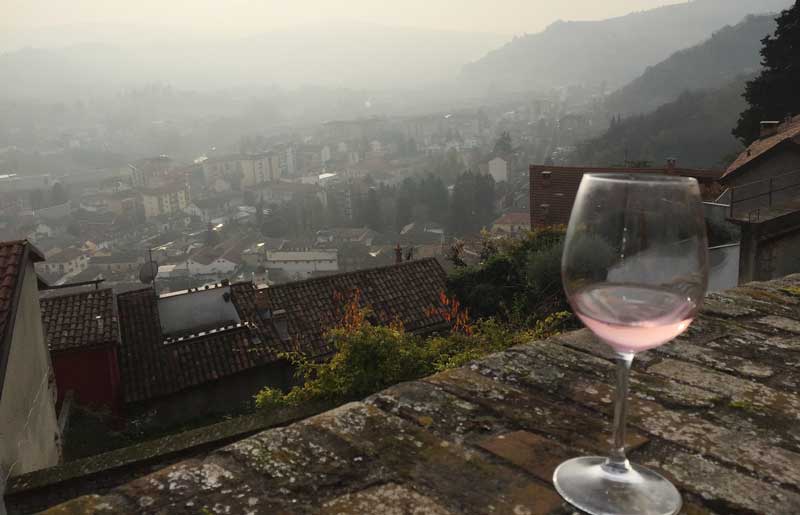
Sunset beckons atop Castello Gancia Canelli.
Truffle hunting is big business here in Piedmont, a region of northwest Italy. In nearby Alba, 30 kms away, they’ve just wrapped up white truffle season in October. (Alba is also famous for its Ferrero coconut-covered chocolates.)
Winemaking is an even bigger business in Piedmont, producing half a billion bottles yearly, but the wild truffle is kind of the icing on the cake; it’s another way this region is blessed. No wonder UNESCO lists the hills of Alba and Asti as Human Heritage Sites. In nearby Canelli and Alba, there are truffle festivals and contests (they’re judged on size, quality, pungency, and how cleanly they’ve been uncovered by the dogs).
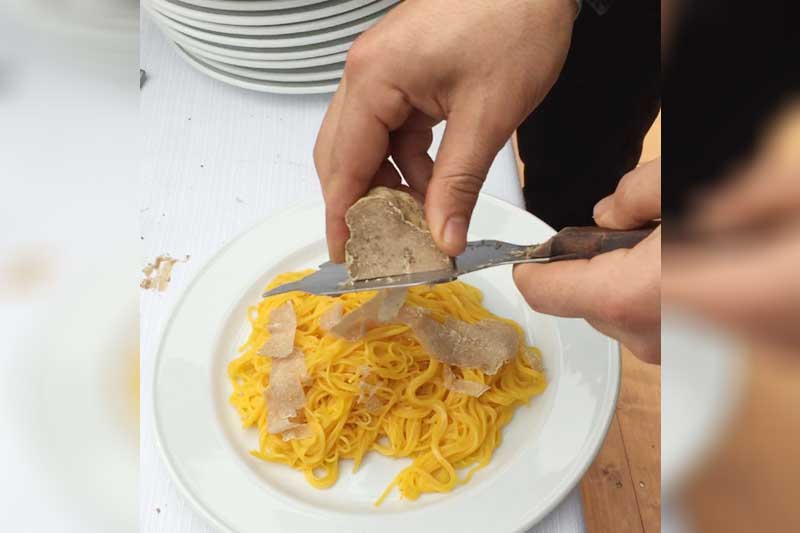
Abundant white Alba truffles are a value-add for those visiting the Piemonte region of Italy for its sparkling wines.
Truffles are abundant here, but expensive. Going for about 20 euros per gram (about P2,000), many of our group were tempted to tap a local truffle supplier and smuggle a few precious clumps home.
For me, it was enough to enter the restaurants and shops and enjoy the permeating smell: inside Lanteri’s restaurant, you walk into the central dining room and you’re almost knocked back on your heels by the scent of white truffles: if there’s such a thing as Truffle Heaven — the one Lanteri’s Lagotto no doubt dreams about — this must be what it smells like.
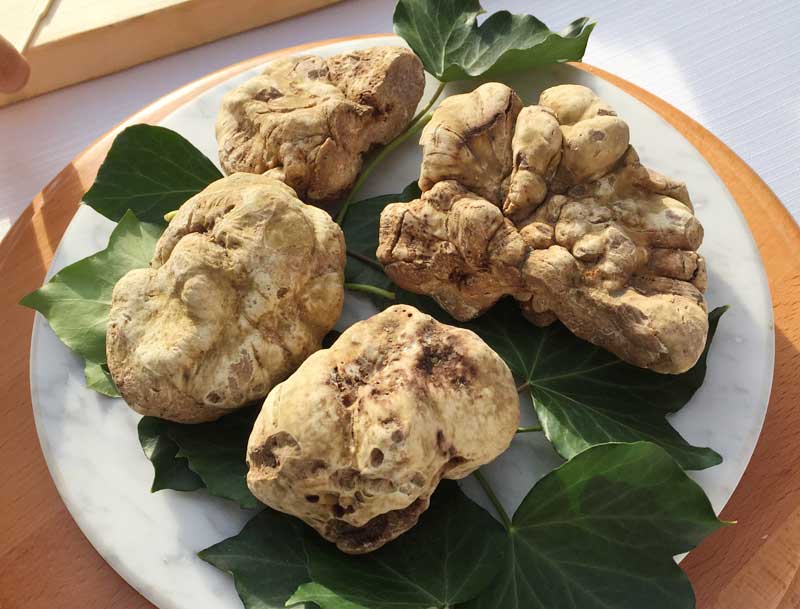
White truffle season had just ended, and we encountered these beauties at almost every meal organized by Consorzio D’Asti D.O.C.G. and International Exhibition Management.
And so generously served. During truffle season, those white clumps are grated over your handmade taglierini or risotto as freely as parmesan. It adds an extra layer of sublime richness to this already blessed territory.
To fully appreciate Asti and its great wines, you must dig deeper — into its food. So that’s what we did: invited by Consorzio D’Asti D.O.C.G. and International Exhibition Management to the sparkling wine towns of Asti, journalists from around the world were treated to three days of mouth-watering wine-pairing events at Michelin-star restaurants. (#ILoveMyJob)
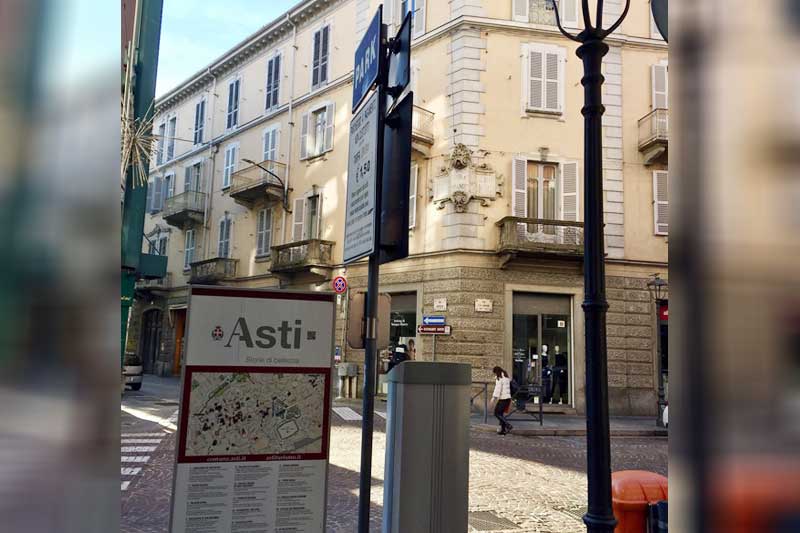
The wine-producing hills of Asti, a territory of Piedmont, have been declared a UNESCO Human Heritage site.
We also did our own share of cooking. Touching down at the International Culinary Institute for Foreigners (ICIF) in Asti, we spent a day sautéing porcini in Moscato d’Asti sparkling wine, poaching eggs and then frying them, and whipping up a risotto with a local Barbera red.
There’s something both nerve-wracking and satisfying about being instructed by an Italian chef whose rapid-fire words are being translated into English as we hustle to poach eggs in boiling water, fry up those mushrooms in delicious wine, and struggle to make our risotto look as perfect as our maestro’s. Elsewhere, in other kitchens, our journalist comrades tried their hand at crafting desserts (Moscato-infused cream for the sponge cake) and pasta (hand-pulled taglierini made with 20 eggs). It’s a bit of hands-on experience that really makes a trip to Italy, and Asti, memorable.
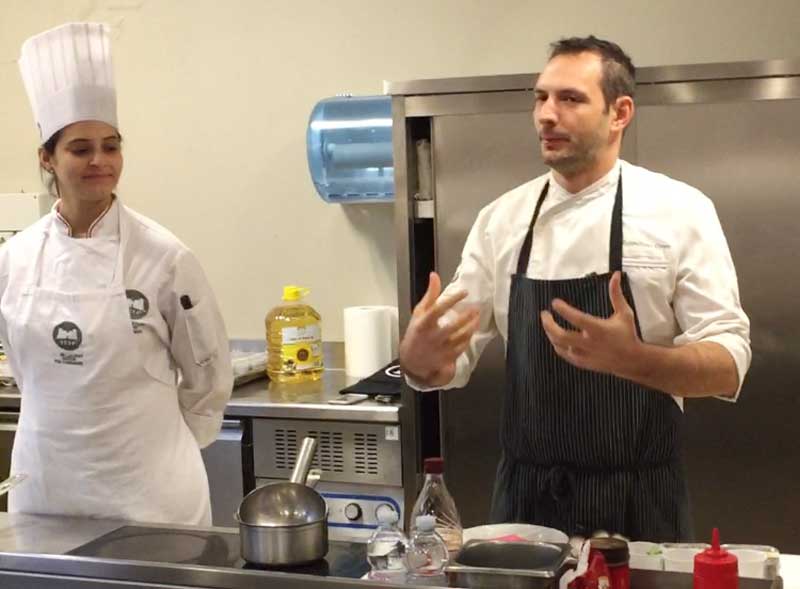
Our day at the International Culinary Institute for Foreigners (ICIF) in Asti was like an episode of Master Chef, if Gordon Ramsey spoke Italian and was being translated into English while we attempted to cook.
* * *
Visit www.icif.com/en/. Check out @consorczio.asti.docg on Instagram, and follow me at @scottgarceau.
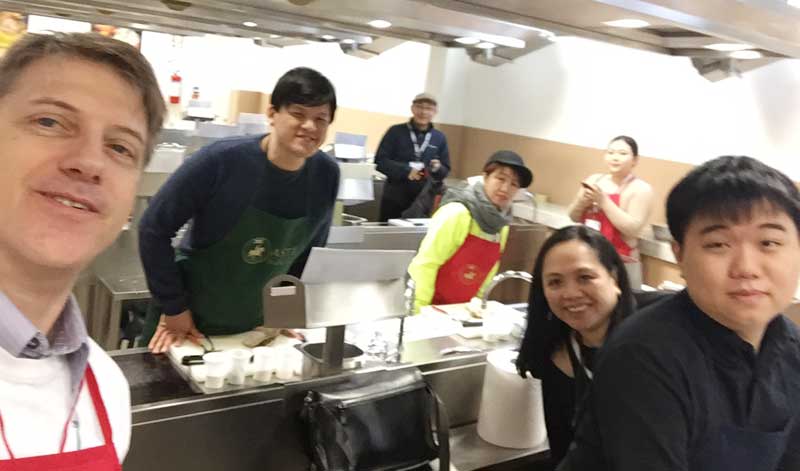
* * *
How To Cook Risotto The Asti Way Risotto With Barbera D’asti & Sausage
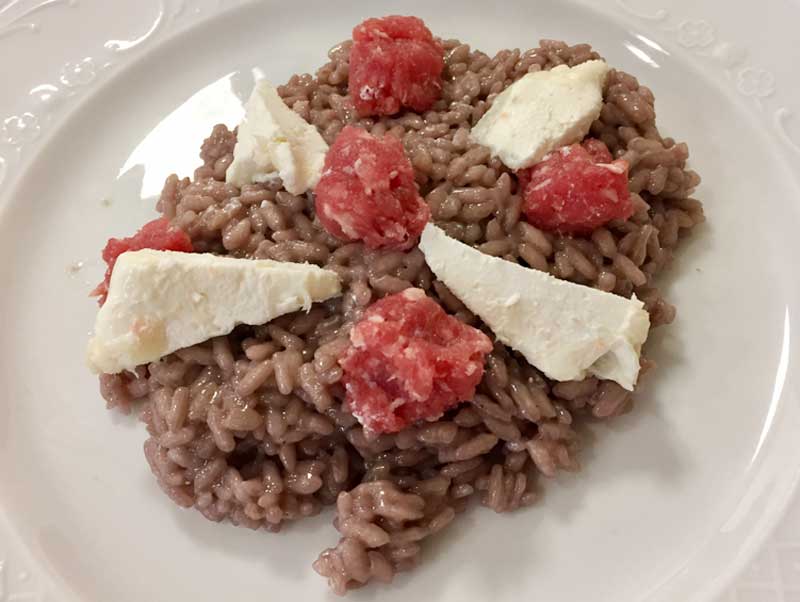
This recipe was so good, we decided to duplicate it at home.
(Serves 4)
Prep time: 40 minutes
Ingredients:
Beef broth, 1.5 liters, 1500 ml or 6.3 cups
Superfine Arborio rice, 280 g
Grana Padano DOP (parmesan), 100g
Onion, 150g
Barbera d’Asti DOCG, 200g
Butter, 80g
Grated Grana Padano DOP, 80g
Robiola di Roccaverano or any Italian soft ripened cheese
Italian sausage, 200g
Procedure:
Bring the broth to a light boil.
In a saucepan, boil the Barbera D’Asti and flambé, so that it loses its acidity.
Sauté the finely chopped onion in a saucepan with extra-virgin olive oil.
Add the rice and toast it for a few minutes over a moderate heat, add the Barbera d’Asti and let it evaporate completely. Cover with the hot broth and continue cooking over high heat, add boiling broth as it is absorbed, continuing to stir.
Remove the rice from the heat, stir in the butter, grated Grana Padano and half the Robiola di Roccaverano.
Serve the rice, garnish with the remaining Robiola cut into small pieces and the crumbled Italian sausage.















